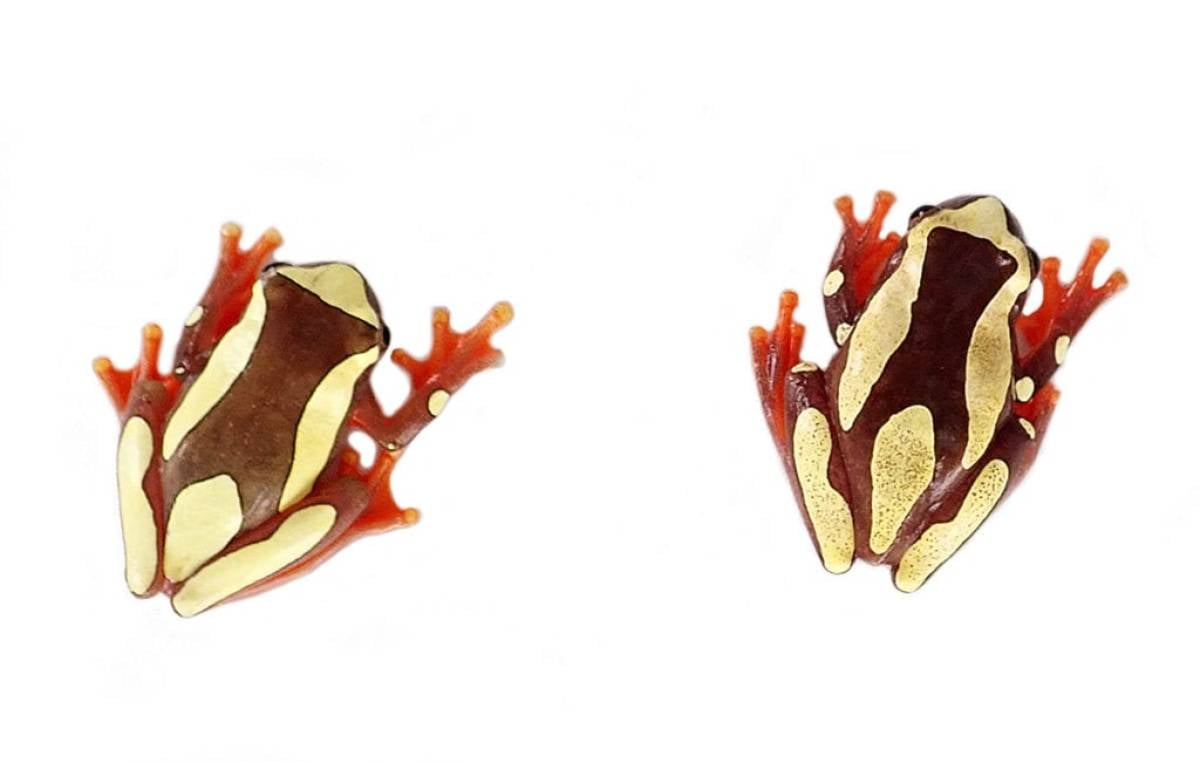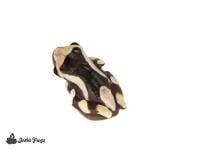Josh's Frogs
Clown Tree Frogs - Care Sheet

Defining Characteristics:
Intermediate | Bright gold dorsal patterns and red ventral coloration | somewhat shy | 1”-1.5” | quiet “whee” | good in groups | egg deposition on leaves above the water’s surface
Name:
Dendropsophus leucophyllatus. Beireis' treefrog, White-leaf Frog and Clown tree frog
Recommended Vivarium Size:
Adult Clown tree frogs should be kept in at least an 18x18x18 front opening tanks or 20 gallon enclosure but would appreciate more vertical space. Newly morphed froglets can be kept temporarily in 12x12x18 front opening tanks or a 10 gallon. Vivariums should be Heavily planted with plants with leaves for perching and hiding in. Branches should also be supplied to increase overall climbing surfaces for the frogs.
Temperature:
Between 72° and 78° degrees.
Humidity:
50-70%
Size: Clown tree frogs are sexually dimorphic like many other frogs where the females are larger than the males. Males hover around the 1” range and Females can reach almost 2”.
Age:
Clown Tree frogs can live for 5-8 years, though they may live longer in captivity with ideal care.
Feeding:
Clown tree frogs can be fed crickets of varying sizes for their whole lives - up to 1/2"" for adults.
Sexing:
Females are visually larger than males.
Color/Pattern:
Most clown tree frogs in captivity are a reddish brown with bright gold coloration on the back and legs. The stomach can range from orange to deep red. There is an uncommon morph of this species that has reticulations instead of large blotches.
Social Behavior:
Although clown tree frogs will compete for mates, they will live fairly peacefully with their own kind.
Breeding:
Male Clown tree frogs will call to attract females during the rainy season and, after amplexus, females will deposit eggs on the tops of floating vegetation.
Development:
Eggs develop into tadpoles over the course of 5-10 days, and tadpoles can take anywhere between 3-5 months to develop into froglets. Note that in this species, tadpoles are fairly fragile and do not tolerate large water changes or water movement.
Tadpoles:
Tadpoles should be kept in an aquarium with tannin rich water that has been cycled. Tadpoles will readily eat a variety of fish food and Josh’s frogs Tree frog tadpole food. Sponge filters should be placed in the tank and no more than 25% of the water replaced during water changes.
Natural Range:
Bolivia, Plurinational States of; Brazil; Colombia; Ecuador; French Guiana; Guyana; Peru; Suriname. (IUCN red list)

